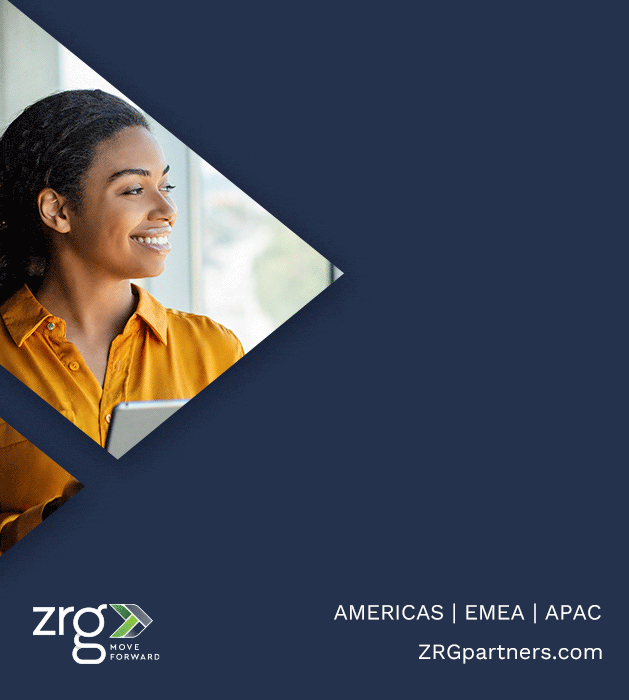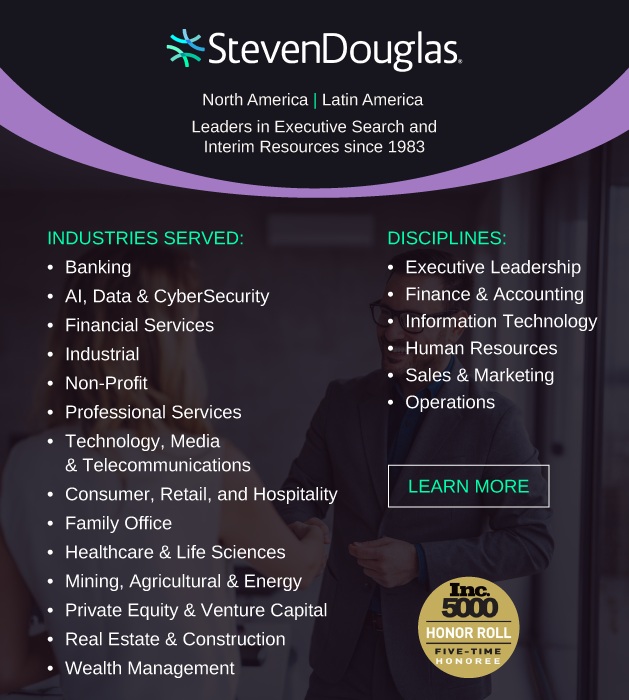A seismic shift is underway in how companies create value through their people. Organizations are leveraging AI not just to optimize workflows, but to reimagine roles, accelerate growth, and reinvent what talent strategy looks like in a machine-augmented world. Leo Cummings, an associate at Hunt Scanlon Ventures, unpacks how the global talent landscape is shifting in response to AI’s rapid integration.
PwC’s 2025 Global AI Jobs Barometer analyzes nearly one billion job ads and thousands of financial disclosures across 24 countries.
According to Joe Atkinson, PwC’s Global Chief AI Officer, “It doesn’t just feel like AI is revolutionizing the workplace, it actually is.” Since the explosion of Gen AI, he noted, “industries most exposed to AI have three times higher growth in revenue per employee.”
AI adoption is expanding across sectors, including those not traditionally associated with digital transformation. The report highlights increasing AI usage in every major industry, from financial services and manufacturing to agriculture and construction.
This widespread uptake supports the idea that AI is becoming foundational to how organizations operate – not just a feature of tech-heavy firms.
Silver Lining for Workers
The impact of AI on productivity is visible in workforce metrics. Since 2022, productivity growth in AI-exposed industries has nearly quadrupled, while it has flatlined in industries less equipped to deploy AI, the report said.
Wages are rising twice as fast in AI-exposed sectors, and workers with AI skills now command a 56% wage premium, according to the report.
“Enterprises are working to move as quickly as the tech is advancing, with AI as a value play… not just powerful use cases, but true enterprise-level integration.”
These gains are not limited to high-tech professions. Even jobs once considered highly automatable are seeing increased pay and value as they shift to more complex, decision-driven responsibilities.
Contrary to fears of mass displacement, job growth is happening in nearly every AI-exposed occupation. While roles are being reorganized, they are not disappearing.
The report noted that automation is freeing workers to focus on higher-order tasks – often increasing their value to employers.
“Jobs are not disappearing, they’re growing,” Mr. Atkinson shared. “And upskilling in the Age of AI may feel more challenging given the pace, but it’s paying off.”
AI as a Value Play
PwC highlights the emergence of “agentic AI” – autonomous systems that support and scale human effort. These digital agents are already managing workflows, reducing repetitive labor, and boosting innovation.
This marks a new model of work: one where AI supports end-to-end execution across roles and departments.
The report warns that organizations that view AI narrowly – as just a tool to cut costs – will fall behind. “Enterprises are working to move as quickly as the tech is advancing, with AI as a value play… not just powerful use cases, but true enterprise-level integration,” Mr. Atkinson wrote.
Demand for formal degrees is declining, especially in AI-exposed fields. Instead, employers are prioritizing critical thinking, tech fluency, and adaptability.
“AI is now influencing who companies hire, how they train, and what they measure as success. It is touching every layer of the talent model – and doing it faster than most companies anticipated.”
According to the report, the pace of skills change in AI-exposed roles is now 66% faster than in less-exposed roles – more than 2.5 times the rate from last year.
The Human Capital Inflection Point
This reshaping of talent priorities presents both a challenge and an opportunity. Organizations that invest in reskilling and redefine job design around AI will gain a long-term edge.
“Talent leaders are no longer asking whether skills are changing – they’re asking how quickly they can reskill entire functions,” said Leo Cummings, an associate at Hunt Scanlon Ventures. “There’s a growing realization that agility is becoming the most valuable capability in the workforce.”
As PwC noted in its announcement of the Barometer’s launch, “Unlocking the value of AI is about how we as leaders rise to the challenge: how to drive the changes in working practices and culture that will multiply AI’s value – not just for organizations, but for our people too.”
AI isn’t here to replace the workforce – it is raising the bar for it. By amplifying human capability, accelerating innovation, and transforming organizational design, AI is ushering in a new era of enterprise performance.
“AI is now influencing who companies hire, how they train, and what they measure as success,” said Mr. Cummings. “It is touching every layer of the talent model – and doing it faster than most companies anticipated.”
Article By

Leo Cummings
Leo Cummings is Editor-in-Chief of ExitUp, the investment blog from Hunt Scanlon Ventures designed for professionals across the human capital M&A sector. Leo serves as an Associate for Hunt Scanlon Ventures, providing robust industry research to support the firm’s investment group.






